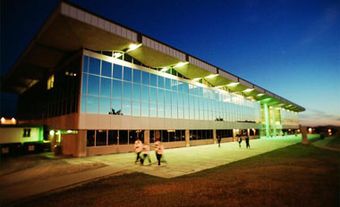University of Victoria
The University of Victoria, in Victoria, BC, was founded in 1903 as Victoria College and affiliated with McGill University, offering first- and second-year arts and science courses towards a McGill degree. The opening of the University of British Columbia in 1915 resulted in the suspension of Victoria's university program. Five years later local pressure brought the college back into being, again as a 2-year institution but affiliated with UBC and offering the first 2 years of a BA at that university.
Through the 1950s the college expanded its curriculum to a full degree program in basic arts and science. In 1961 it awarded its first bachelor's degree - a UBC degree but completed entirely in Victoria. Two years later it became independent, and soon afterwards moved to its present 115 ha campus. U Vic offers undergraduate and graduate programs through the faculties of humanities, sciences, social sciences, business, education, engineering, fine arts, graduate studies, human and social development, and law. It also has several interdisciplinary study centres, and certificate and diploma programs through continuing studies.
Recent innovative projects include acting as the lead Canadian institution in the NEPTUNE project, an international effort to create an extensive high-tech scientific observatory network monitoring the ocean floor from California to Vancouver Island, Uvic also has Canada's third-largest university co-operative education program, integrating academic studies with relevant paid work experience in 40 academic areas.
Uvic is the fourth-largest employer in Victoria. U Vic's colours are red, gold, and blue. The university mottoes are "Let there be light" (in Hebrew) and "A multitude of the wise is the health of the world" (in Latin). Approximately 13 000 full-time and 5000 part-time students attend U Vic.

 Share on Facebook
Share on Facebook Share on X
Share on X Share by Email
Share by Email Share on Google Classroom
Share on Google Classroom


